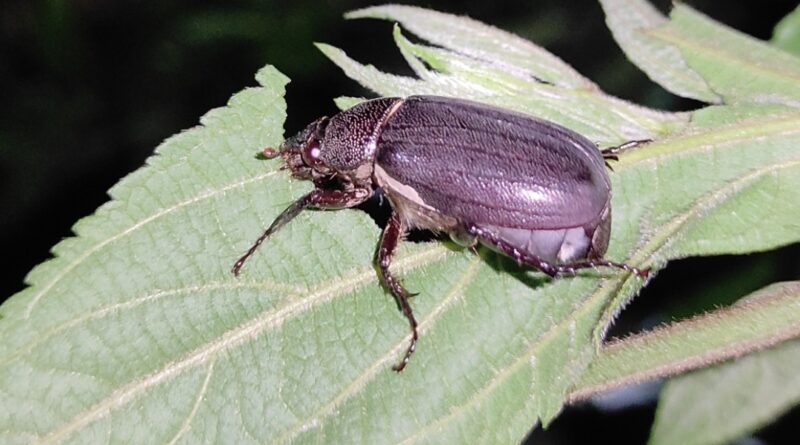Advisory for management of Beetles in Apple and stone fruits
Recently there have been reports related to the infestation of beetles in apple and other stone fruits. Defoliating beetles are also known as May or June beetles. These beetles are polyphagous and are pests of significant importance in horticultural and agricultural ecosystems. The beetles lay eggs in the soil, after the emergence of the adults during summer rains. Egg period may last from a few weeks to over a month depending upon species of beetle.
Dr YS Parmar University of Horticulture and Forestry, Nauni has released an advisory to effectively manage this pest. In the initial Larval Stage (White Grub), it feeds on soil organic matter and humus and as the larvae grows it starts to feed on the roots. The grub is recognizable by its C-shaped, creamy-white body and brown head. During winters, when soil temperature falls down, the grubs cease feeding and move deeper into the soil and stay dormant during the winter and resume feeding during next spring. Fully fed grubs move deeper in the soil during late spring to summers and form an earthen cell, for transforming into pupae.
The adult beetles emerge a few weeks later. These larvae dwell in the soil and voraciously feed on the roots of high-value crops such as apple, peach, and citrus trees, as well as vegetables like potato, carrot, and tomato. Ornamental plants are also not spared. Root feeding by white grubs compromises plant anchorage and disrupts nutrient and water uptake, leading to symptoms like wilting, stunted growth, and, in severe cases, complete plant collapse. Adult beetles are notorious for their foliar feeding habits and consume tender leaves, leading to widespread defoliation. This damage not only reduces the photosynthetic capacity of plants but also diminishes overall plant vigour and productivity.
Some beetles show a distinct preference for the reproductive parts of plants—feeding on flowers, fruits, and nectar. Their activity directly damages these structures and often results in poor fruit set and reduced yields.
Management:
Scarab beetles pose a serious threat to horticultural and field crops in many agro-climatic regions. Managing these pests effectively requires a holistic Integrated Pest Management (IPM) strategy that combines cultural, mechanical, biological and chemical methods tailored to pest biology and local conditions.·
Cultural practices: Fields with a history of infestation should be ploughed repeatedly during April–May or September. Tillage disturbs the soil and exposes grubs to natural predators such as birds and can be manually collected to reduce pest population. Care must be taken that only fully decomposed farm yard manure is applied in the field which discourages grub development and supports the growth of beneficial soil organisms.
Mechanical control: Since adult emergence is generally synchronized with the first summer rains, their collection and destruction at this stage is a cost-effective and efficient measure. The adult beetles usually come to feed on the foliage and fruits during the dusk period, usually after 8:00 PM. The beetles may be collected by shaking the branches of the trees and collecting them by spreading a cloth beneath the tree canopy. Destroy or kill the beetles by dipping them in the Kerosene (5%) mixed water. Light traps are primarily used for monitoring purposes. These traps should be installed in open areas to maximize attraction and population reduction. Mass collection campaigns should be started after summer rains. The farmers who are practicing natural farming can also spray Agniastr, Brahmastr and Dashparniark (3 liter/ 100 liter water) for three continuous days to reduce the infestation of beetles.



